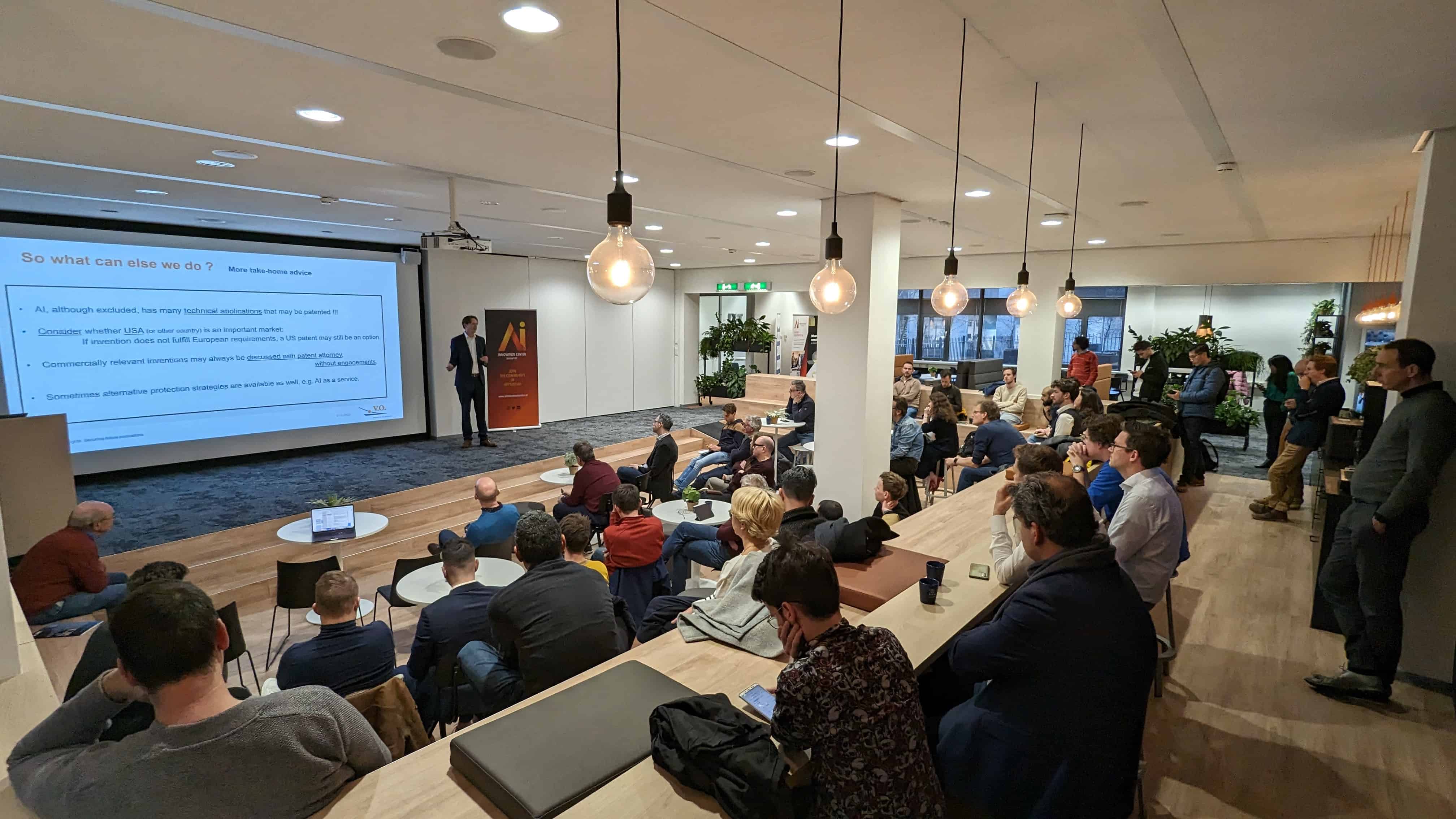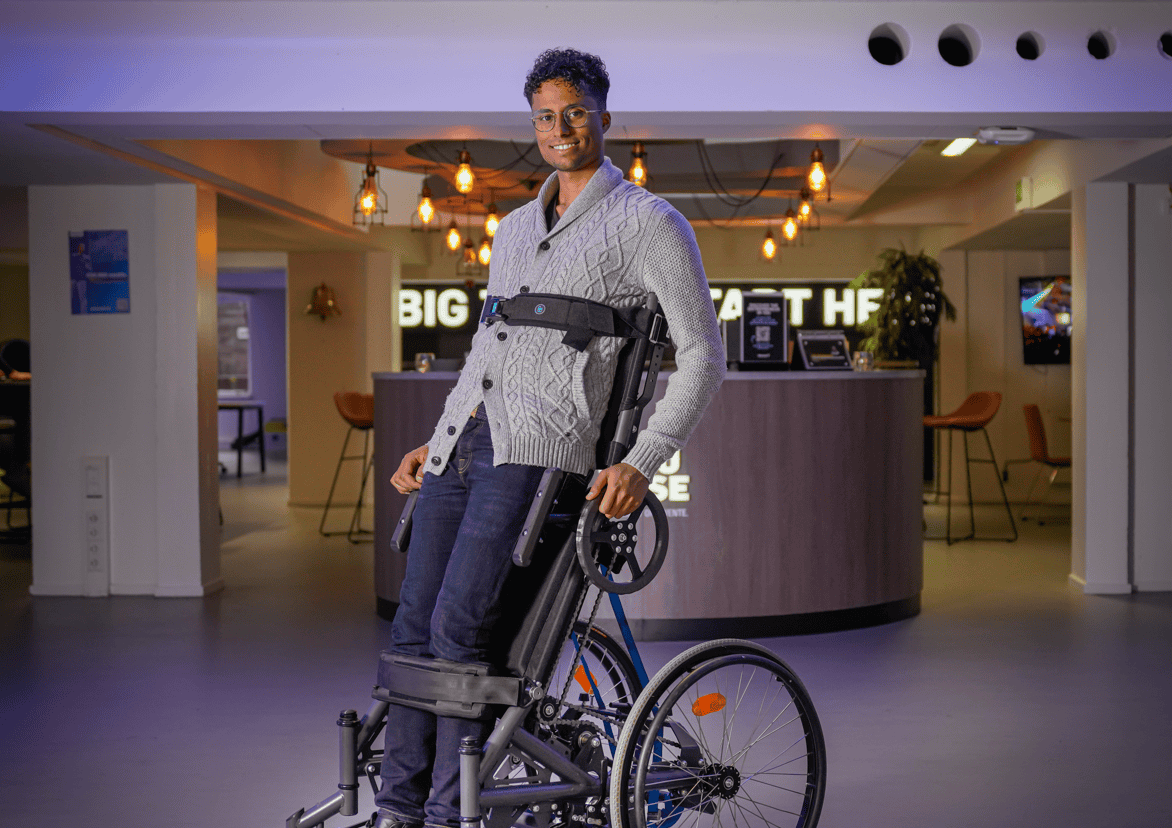
It’s been in existence for 25 years. The Dutch Research and Development Promotion Act (Wet Bevordering Speur- en Ontwikkelingswerk, WBSO). Thanks to the WBSO entrepreneurs can carry out more research on innovations. This is to enable them to transform ideas into successful products and services more quickly, as can be read on the website of the Netherlands Enterprise Agency (Rijksdienst voor Ondernemend Nederland, RVO). Every entrepreneur, whether small, large or just starting out, can make use of it as long as they have staff in their employ. Ilse Jansen and Gerben Hellinga at EY know all about the scheme and they have come across all kinds of things in their dealings with it.
“Ranging from any boffin who has a brilliant idea and is working on their own, to (family) companies that have been very stable and have had an R&D (Research & Development) department for years, to the major players who have large R&D centers like so many different companies in the Eindhoven region. You really are at the forefront of developments, at the very heart of companies,” says Hellinga. He has had years of experience with the WBSO and works as senior tax manager at EY, a global concern which specializes in accountancy, tax advice and business advice. “EY has been expanding its subsidy activities for a number of years now.”

If companies make a profit with their innovation, they may use the Innovation Box in addition to the WBSO. This is a tax scheme for corporation tax, which just like the WBSO, is intended to stimulate innovative research and technical developments. On profits made from an innovation, you pay 7 percent and not the usual 20 – 25% in profits tax. The schemes are linked to each other. You may only use the Innovation Box if you use the WBSO, Hellinga explains. “This makes working at EY even more interesting, because we are able to combine technical knowledge about the WBSO with fiscal specialists.”
Innovative and sustainable
“At EY we have a group of specialists that focuses primarily on the innovative and sustainable business community,” states Hellinga, who works out of Rotterdam. Jansen works as a senior manager based in Eindhoven: “This Innovation Group is made up of several specialisms from various subsidy and consultancy sources and different departments within EY, all working together in this group. For corporation tax it could be, for example, the Innovation Box, or environmental and energy investment deductions and energy deductions. Jansen works at EY within the People Advisory Services group of specialists, and she gives a lot of advice to employers that relates to payroll taxes.
“The WBSO is a tax deductible if you have staff who are busy with innovation,” Jansen continues. Hellinga: “It is the largest subsidy scheme for innovative Netherlands. And the great thing about it is that the scheme is based on a best-efforts obligation. So you don’t have to succeed in your innovation project. It’s all about the effort you’ve put into it. Obviously, you do keep a record of your hours during your project.”
Maintaining technological work opportunities
Hellinga: “By using the WBSO, our customers will be able to really accelerate or increase their innovative developments. For example, they can take on an extra staff member in the R&D department. That’s exactly what this WBSO scheme is intended for. So if you break it down, it’s about bringing these technological jobs to the Netherlands or keeping them here.”
Hellinga considers one of the major advantages of the WBSO is the speed at which a decision is made. “There are some interesting European subsidies as well. In terms of approval of your application, these often have a longer processing time than through the WBSO. With the WBSO, you will know within three and five months, sometimes faster. And if it is approved, you can immediately put that advantage to good use. So in the month that the RFO informs you that it approves your application, you can already incorporate that credit into your payroll tax.”

“Our work is only a small part of the overall work we do at EY. But of course our work area is the most interesting”, laughs Hellinga. “It also feels good when the application is approved. Like: “we did it again!” adds Jansen. Hellinga: “You’re basically earning the company money.”
You may submit an application to the WBSO a maximum of three times per year. That offers some flexibility, Janssen explains. “Sometimes it’s difficult to estimate your R&D hours for a whole year.” As of January the 1st, 2020, it will be possible to submit an application four times a year. This is in order to better fit in with the ever-increasing shorter cycle of innovations. The deadline for submitting an application has also been changed to the day prior to the period that the application relates to. At present, there still needs to be a calendar month between these two dates. However, there is an exception for applications that start on the 1st January of a calendar year, in which case the deadline is the 20th December of the previous year. These changes take effect on January the 1st, 2020. This means that an application for the period from January the 1st, 2020, must be received by RVO by November the 30th, 2019 at the latest.
Higher subsidy percentage
The scheme is also interesting for start-ups, but in that case they do need to have staff in place. “But start-ups have the additional advantage that the subsidy percentage from the WBSO is higher in the first three years,” Jansen adds.
Aside from staff on the payroll, the scheme also has the condition that it must be a technological development. Hellinga: “Someone who wants to make a new web shop or has a new idea as a kind of business plan, is not eligible for the WBSO. Developing an app based on existing software techniques is also not enough. “It will be if the technology of that app has something new and the company itself is solving and researching the technical challenges.”
“Consequently, if you have technical staff on the payroll and you are working on an innovative project, then you will be missing out on real money if you don’t use the WBSO. In the short term, however, as well as in the long term when it comes to this innovation box.”
The budget for WBSO in 2019 totaled € 1,205 million; for 2020, the government will make € 1,281 million available.
A video about the WBSO can be found on the RVO website.








